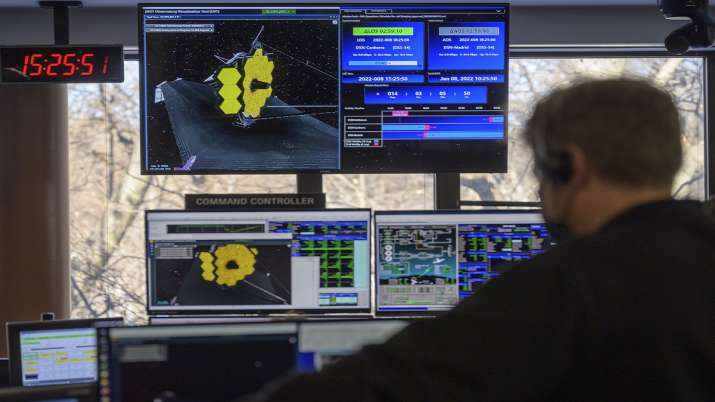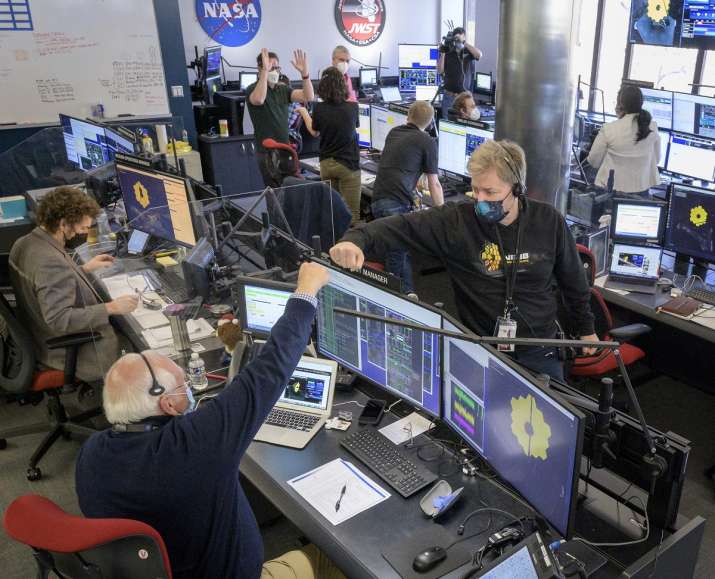
Engineering teams at NASA’s James Webb Space Telescope Mission Operations Center at the Space Telescope Science Institute in Baltimore monitor progress as the observatory’s second primary mirror rotates into the wing position
NASA’s new space telescope opened its giant, gold-plated, flower-shaped mirror on Saturday, the final stage of the observatory’s dramatic escalation.
The final part of the 21-foot (6.5-m) mirror snapped into place at the command of flight controllers, revealing the James Webb Space Telescope.
“I’m passionate about it. What an amazing milestone. We see that beautiful pattern in the sky now,” said Thomas Zurbuchen, NASA’s chief of science mission.
More powerful than the Hubble Space Telescope, the $10 billion Webb will scan the universe for light streaming from the first stars and galaxies that formed 13.7 billion years ago. To accomplish this, NASA had to outfit Webb with the largest and most sensitive mirror ever launched – its “golden eye,” as scientists call it.
The web is so big that it had to be folded origami-style to fit a rocket that flew over South America two weeks ago. The riskiest operation took place earlier in the week, when a tennis court-sized sunshield was hoisted, providing a subzero shade for mirrors and infrared detectors.
Flight controllers in Baltimore began opening the primary mirror on Friday, unfolding like a drop-leaf table to the left. The mood was even more upbeat on Saturday, as the control room filled with thumping music on the right. After a thunderous applause, the controllers immediately returned to work, shutting everything down.
The engineering team at the Space Telescope Science Institute in Baltimore celebrates the second primary mirror wing of NASA’s James Webb Space Telescope before the process of putting the mirror wing in place begins.
This mirror is made of beryllium, which is a lightweight but strong and cold-resistant metal. Each of its 18 sections is coated with an ultra-thin layer of gold, which is highly reflective of infrared light. The hexagonal, coffee table-sized volumes will be adjusted over the coming days and weeks to focus on stars, galaxies and alien worlds that may hold atmospheric signs of life.
Webb should reach its destination 1 million miles (1.6 million kilometers) away in the next two weeks. If all goes well, science observations will begin this summer. Astronomers hope to return within 100 million years of the Big Bang that created the universe, which Hubble has achieved.
Read also | NASA’s James Webb Space Telescope launched on a mission to uncover the secrets of the universe. Watch
,
